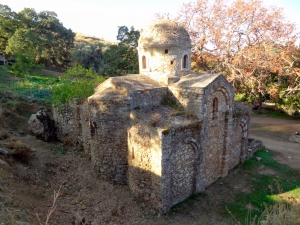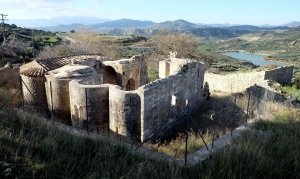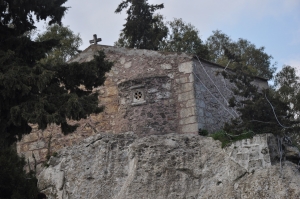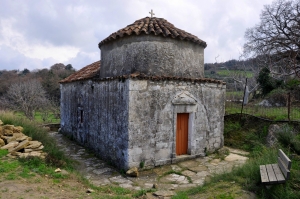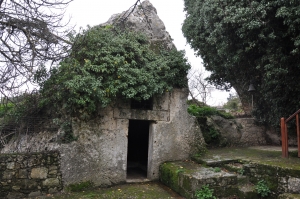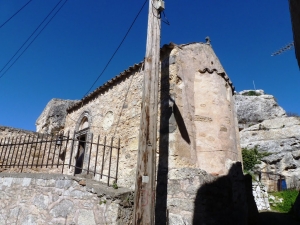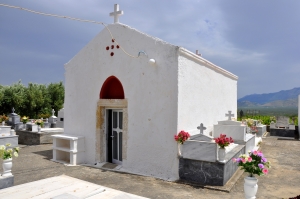The church of St. John is located at a wooded location amid oaks near the village Roukani and is one of the most historical Byzantine monuments of Crete. The church dates back from the 11th-12th century and possibly operated as a monastery dedicated to St. John the Theologian. Today the church is dedicated to St. John the Baptist.
The area of St. Thomas at Monofatsi province can easily be described as a religious park, as it hosted 38 churches in the past. The most spectacular of all still stands still in the center of the village. It is the Byzantine church dedicated to St. Thomas, an aisled basilica with a narthex in front.
The ruined village Mikri Episkopi (i.e. Small Diocese) is located near Partira and was the seat of the Diocese of Arcadia. As expected, the village hosted an imposing temple, which has now collapsed. Columns and walls testify the importance of the temple.
According to residents of the village Agia Varvara , their village is located exactly in the center of Crete. They say that once two priests started walking, one from Sitia and the other from Chania, to share Crete in the middle.
Next to Axedianos River and close to settlement Pirouniana we meet the Byzantine church of Saint George Hostos. The original building had a dome and later it was extended. The part with the dome bears frescoes in fair condition.
The unusual and impressive carved chapel of St. Ioasaf the Indian is located on the site of an ancient Greek temple, the ruins of which are still around the courtyard. It celebrates on August 26 and there is only one more church dedicated to Saint Ioasaf, in Thrace (North Greece).
The church of the Archangel Michael is located in the village of Agios (St) Thomas and is single-aisled temple with "archaic" frescoes of the 12th-13th century.
The cemeterial temple of the village Arhontiko at province Monofatsi is dedicated to the Assumption of Virgin Mary. While the exterior does not look interesting, the interior impresses the visitor with the Byzantine frescoes in relatively good condition.
According to an inscription, the frescoes date back from 1352 and were painted by Theodosios Galinos.











